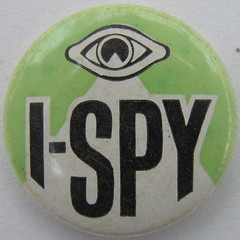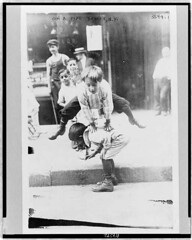Building a Tribe
Which would you sooner believe: Jimmy shouting about how great his book is, or John shouting about how great Jimmy’s book is? I think we’d all value the opinion of someone other than the author of a book or a blog. That’s why we read book reviews, right?
There’s something we can do to help start this buzz or word of mouth. It can be genuine and real and most of all effective—with a little help from your friends.

I hope you already have writing friends. That’s the best part of the online writing community, right? Making friends, finding people who feel like you do. So how do you take those friendships and build a “tribe”?
And wait, what’s a tribe?
A tribe, a clan, a team, a rose
(You know, by any other name . . . ?)
No matter what you call it, a group of like-minded bloggers or Tweeters or Facebookers (or all of the above) can become a valuable resource for all of you. Odds are 100:1 that if you get 4-5 author-bloggers together, even if they write the same genre, their blog audiences won’t overlap.
So what does that mean? If you’re in this group and you write something truly fantastic—a book, a book review, a blog post, etc.—the other members of the group can share that with their audiences.

Looking at it from a mercenary point of view, building a tribe is a great way to increase your audience! But it isn’t purely mercenary: your fellow bloggers (and you!) are always looking for great content and good books to satisfy their audiences.
So, this group you speak of?
Your tribe might be totally informal—just a group of bloggers who happen to hang out together—or you might go so far as to “formalize” your relationship, sending out invitations, setting up ground rules, or even using some sort of social networking site to set yourselves up.
In my opinion, one of the ground rules of a successful tribe is to be sincere. If your friend’s content isn’t right for your audience, no matter how great it is, then you shouldn’t feel pressured to share it. That’s why I don’t particularly care for a program or ground rules that require group members to Tweet/blog/share absolutely everything the other people in the group write.
Because above all, you must be sincere.
It must be sincere!
If a tribe just turns into a retweet machine, and all you ever do is regurgitate and promote one another’s material in an echo chamber, it starts to lose value for the audience—and it starts to ring hollow.
 Personally, I would be very careful about what I want to promote through my tribe. Because all blog audiences are different, you have to know what would suit yours. My friend Julie Coulter Bellon has created a fantastic blog and community, and one of her big features (during the season) is responses and reviews of her favorite crime TV shows (and she writes romantic suspense, so that fits well too). Many members of her blog audience also watch the shows, and it attracts new eyes all the time.
Personally, I would be very careful about what I want to promote through my tribe. Because all blog audiences are different, you have to know what would suit yours. My friend Julie Coulter Bellon has created a fantastic blog and community, and one of her big features (during the season) is responses and reviews of her favorite crime TV shows (and she writes romantic suspense, so that fits well too). Many members of her blog audience also watch the shows, and it attracts new eyes all the time.
But I don’t watch the same shows as Julie, and I don’t really know if you guys would enjoy that. (Want to see me blog about old Law & Orders?!) It doesn’t turn me off her blog at all, but it’s also not the kind of thing that I would envision sharing in a tribe.
On the other hand, I do think another of her weekly features, First Page Fridays, is totally right for my blog audience. She has high-caliber professional editors—Angela Eschler and “Ms Shreditor,” an editor at a publishers—take a look at volunteer submission of the first page. The feedback there is always something to learn from!
 Okay, in this context, this endorsement might not sound as true as I really do intend it to be (because FPF truly is great), but I think First Page Fridays is something that would add value to my blog readers, so I’m sharing it here. Sometimes I tweet about it. Because: 1. I like Julie AND 2. I think my readers would like to see things like FPF AND 3. I can be sincere (maybe?) in what I say about FPF.
Okay, in this context, this endorsement might not sound as true as I really do intend it to be (because FPF truly is great), but I think First Page Fridays is something that would add value to my blog readers, so I’m sharing it here. Sometimes I tweet about it. Because: 1. I like Julie AND 2. I think my readers would like to see things like FPF AND 3. I can be sincere (maybe?) in what I say about FPF.
It’s all about supporting one another
A tribe doesn’t have to just be about retweeting one another’s posts. It’s about supporting one another in whatever way you can: commenting on blog posts, attending or promoting book signings, helping with book launches, brainstorming, answering questions—whatever the group decides you want to cover.
It may not be easy
I kinda made this up as I went along, and I find it hard. Writers are legendarily introverted, and even putting ourselves out there to make friends online can be hard, let alone the subsequent efforts inside a tribe.
One thing I’ve tried from time to time is to set goals for myself in the area of interaction. “Comment on X number of new blogs this week” or “Check on my tribe’s blogs at 2 PM each day” work well, because they give you something concrete to strive for.
What do you think? How do you reach out? Would you use a tribe, or interaction goals? How would you show your support?
Photo credits: Team Spirit—JF Schmitz; Sincere Bank—Chris; Sincere sign—Sam Howzit
 As I’ve worked on all these things, I’ve had to review all my favorite plotting methods and character posts—on others’ blogs, and on my own. So if you’re getting ready for NaNoWriMo, I’ll be sharing tips, strategies and advice to help you get the most out of your Nano experience.
As I’ve worked on all these things, I’ve had to review all my favorite plotting methods and character posts—on others’ blogs, and on my own. So if you’re getting ready for NaNoWriMo, I’ll be sharing tips, strategies and advice to help you get the most out of your Nano experience.

 Now Deana is represented by Sarah Lapolla of Curtis Brown, Ltd., and I’m sure we’ll hear some good news about her book soon (different book, so I haven’t read it [I wish!], but it sounds great!).
Now Deana is represented by Sarah Lapolla of Curtis Brown, Ltd., and I’m sure we’ll hear some good news about her book soon (different book, so I haven’t read it [I wish!], but it sounds great!). .
. . If I had to pick juuuuuust one, it’d be “Keep learning.” I have a book accepted by a publisher and I still take writing classes. Reading craft books recharges me. And number two would probably be “Challenge yourself.” I have to try something new with every manuscript to keep myself interested and growing and challenged. And number three would be check out my
. If I had to pick juuuuuust one, it’d be “Keep learning.” I have a book accepted by a publisher and I still take writing classes. Reading craft books recharges me. And number two would probably be “Challenge yourself.” I have to try something new with every manuscript to keep myself interested and growing and challenged. And number three would be check out my 









